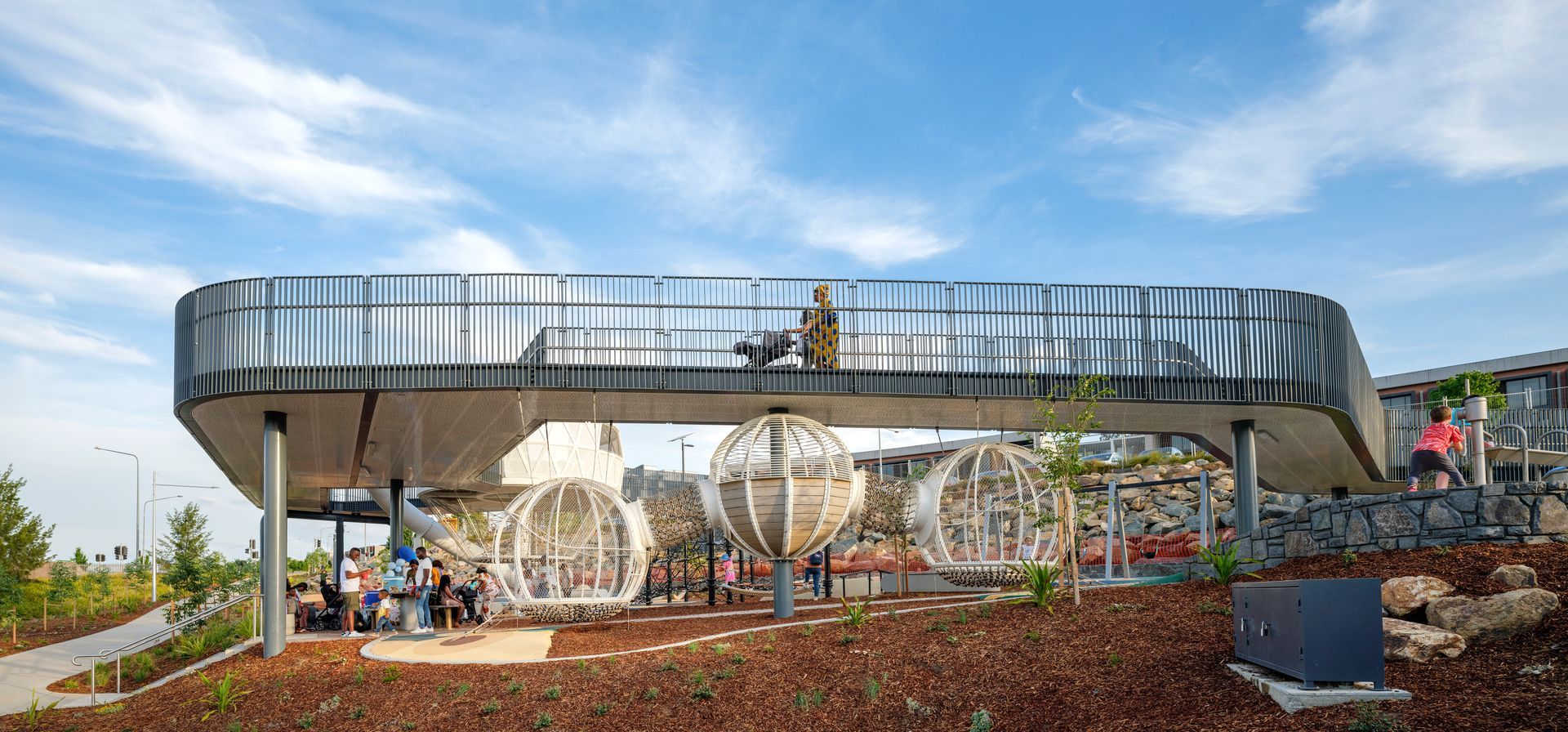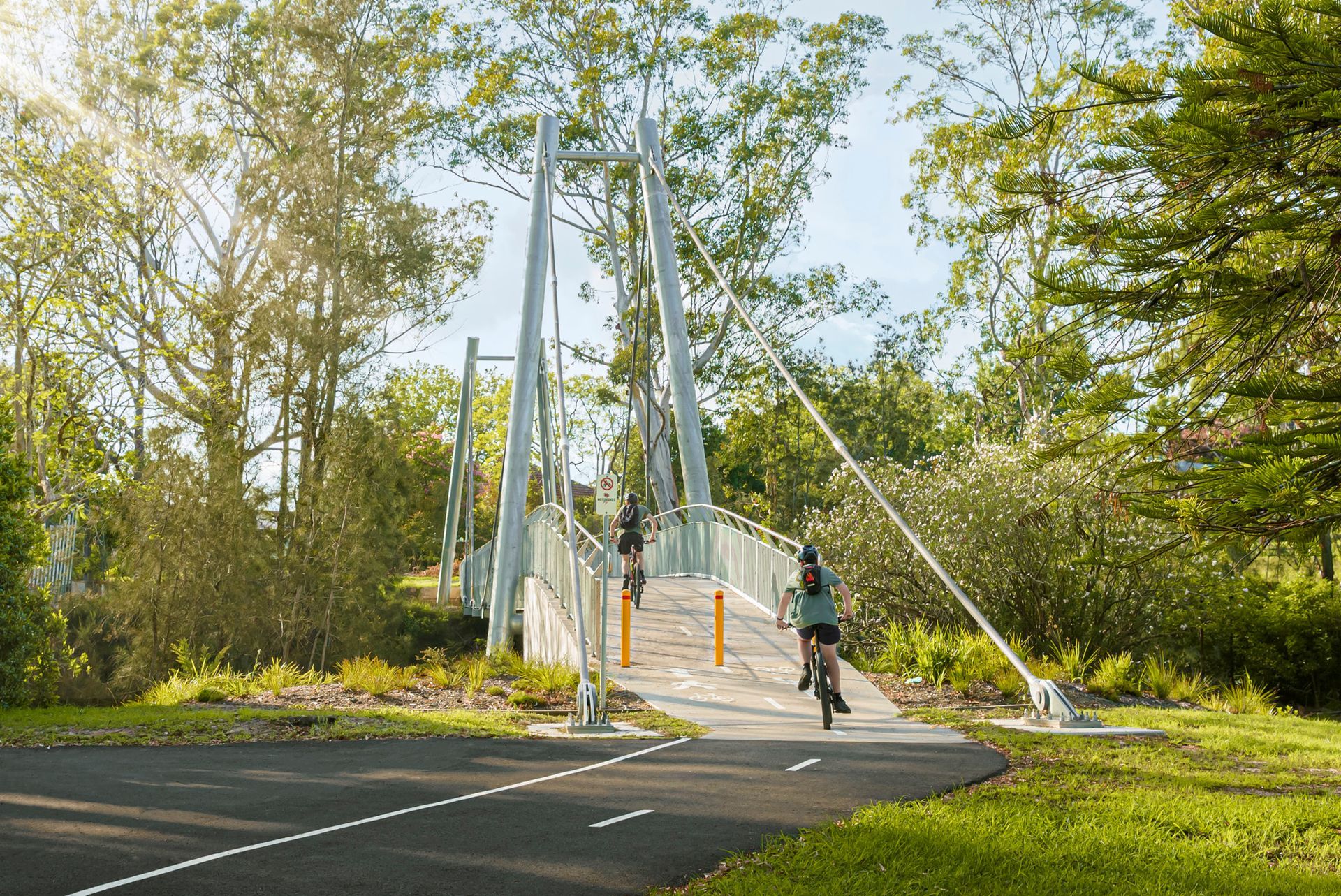Redefining Nature Play
Bommy Knockers. Officially, they’re the spiny seed pod of the platanus tree. But for the families of Coombs in south-west Canberra, they will be forever linked to amazing nature play experiences thanks to Fleetwood’s recently-completed collaboration with acclaimed landscape architects Redbox Design Group.
Awesome amenity
Coombs is a major planned community being developed by the
Suburban Land Agency in the Molonglo Valley, 10km from the Canberra CBD. With a future population of up to 73,000 people, public amenity forms a critical part of the overall masterplan. To help deliver it, Redbox Design Group contracted Fleetwood Urban to detail, manufacture and install 15 bushland-inspired shade shelters and a series of ambitious structural play elements and custom artworks at Ruth Park. The creative showpieces are undoubtedly four giant hardwood ‘Bommy Knocker’ spherical play structures – one cantilevered several meters above the ground – weighing more than four tonnes each!
Redefining ‘nature play’
Describing the project as a once-in-a-lifetime opportunity, Director at Redbox Design Group, Justin Kalinowski, explains the vision was to create a natural play-based escape inspired by Canberra’s native and urban forests, in an existing landscape that was completely man-made with no trees.
“For us, it was about redefining what ‘nature play’ actually means,” says Justin. “We often get told that nature is just dead trees and stones and rocks. But the Australian landscape in particular is about revealing colour and texture. We wanted to create a forest-like space with contemporary Australian landscape architecture that wasn’t just looking and feeling very vernacular, or like we’d just picked some logs up from a paddock and put them into a space and called it ‘nature play’. Rather we structured an environment that references nature and uses unconventional materials and elements that you wouldn’t naturally associate with nature play, but creates a really robust, visually interesting space.”
Redbox Senior Landscape Architect, Olivia Ward agrees, explaining how the typography of the site was used to help articulate the forest concept. “The site has a three-metre grade change,” she says. “At the road level it’s like you’re up in the tree tops, then you have all these different routes to wind your way down to the forest floor. It’s set much lower than the road and speaks more to the level of the adjacent pond. There were all these different experiences we were trying to include, this idea of being in the tree canopy, but then also being enclosed in the forest, having those intimate spaces as well and experiences for kids to explore and play.”
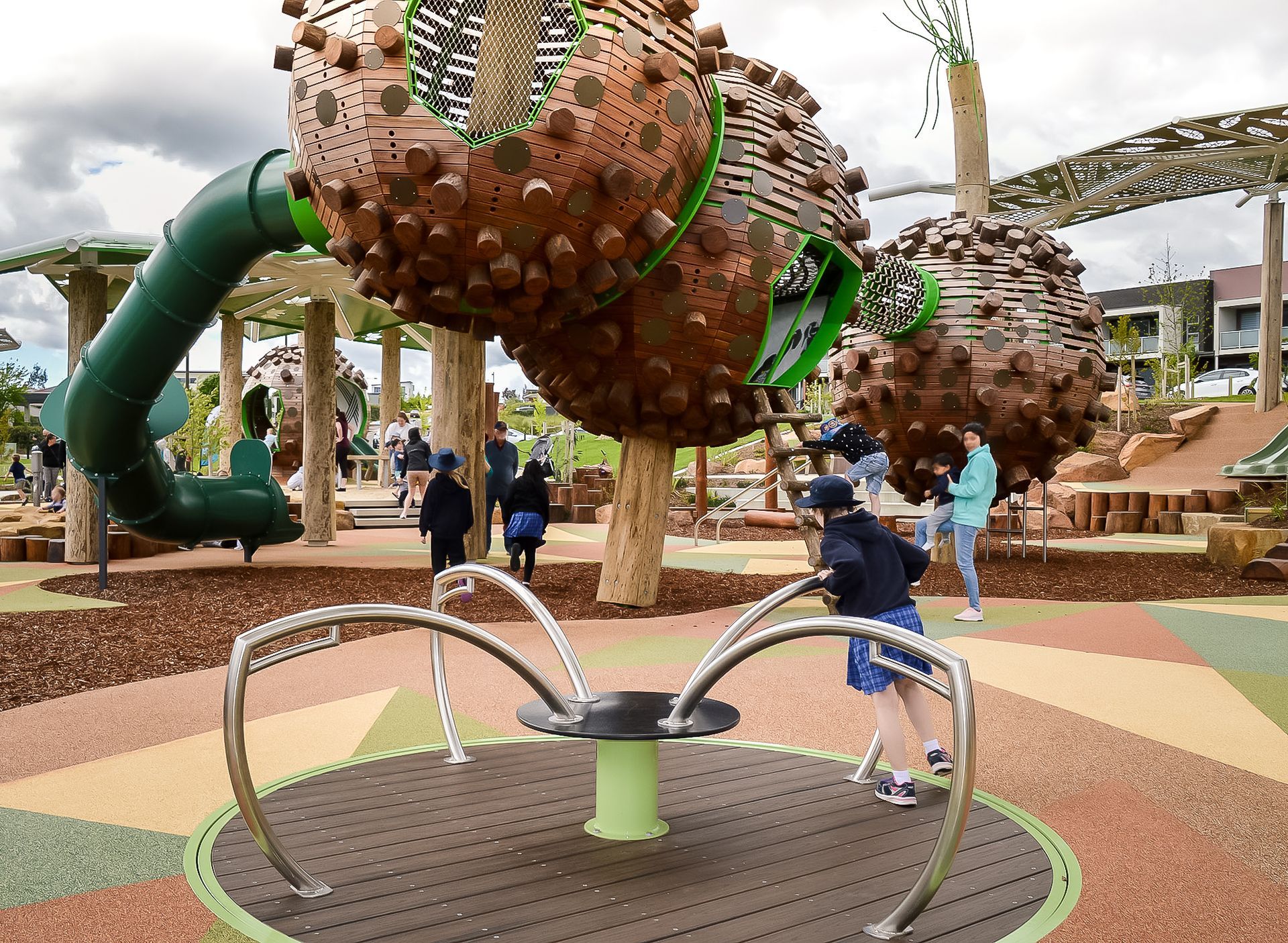
Shade, shade & more shade
Unsurprisingly, given the Coombs site features no less than 15 custom shelters, shade was another critical element of the project. “Shade is one of the main concerns people have in the ACT when a new space is created,” says Justin Kalinowski. “Trees can take a long time to grow to maturity and there’s never enough shade. With the help of Fleetwood Urban, we really wanted to integrate shade into the wider design concept and, in particular, the experiences you have when exploring a forest – that’s what the network of shelters do.”
Creatively complex
Whilst undoubtedly beautiful and creative, the Coombs structures were also challenging to detail and deliver, especially the Bommy Knockers. Our design team worked hand-in-hand with both Redbox and play auditors, Play DMC, to refine and evolve the concepts through a series of desktop and on-site reviews. The intricate nature of the structures called for the highest levels of precision and craftsmanship in the way they were fabricated and pre-assembled. From an installation perspective, the sheer weight and complexity of the Bommy Knockers also required careful planning and on-site reviews to form accurate lift studies to allow crews to work safely.
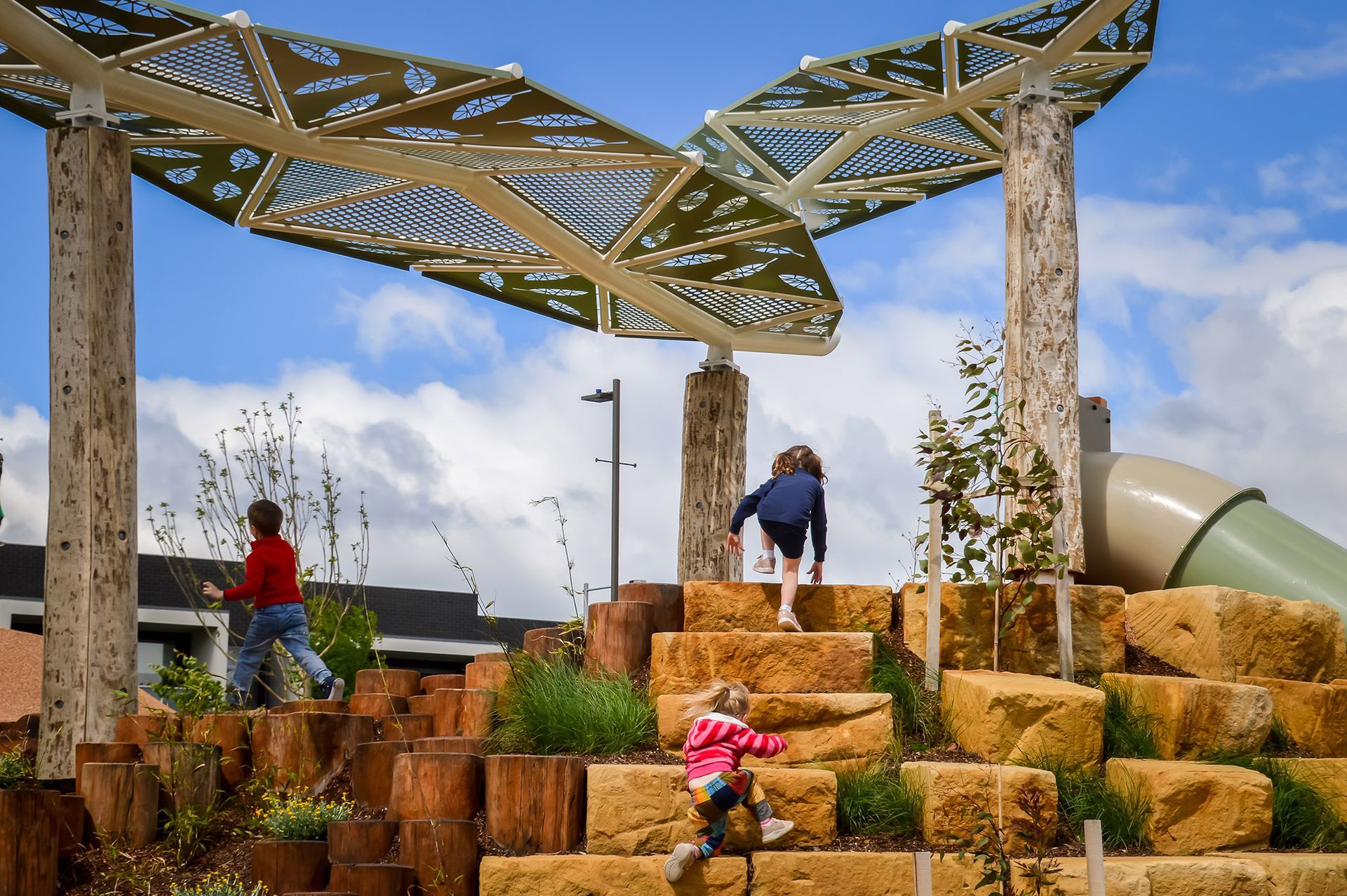
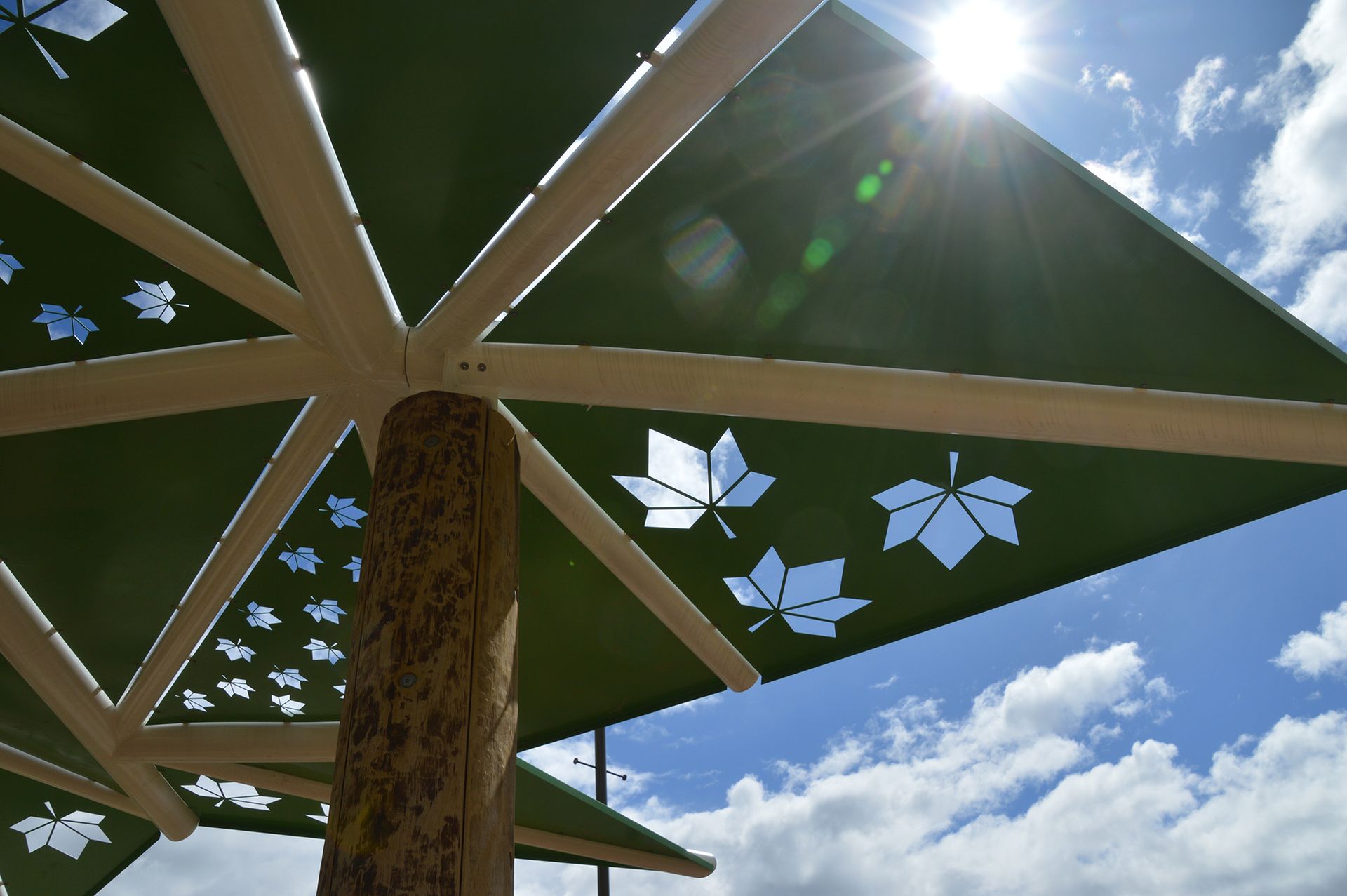
Vision meets reality
With the Coombs structures now open to the public, Justin marvels at how close the finished elements are to the original Redbox designs. “If you look at photos and drone footage of the completed park, side-by-side with our initial design work and models, you can hardly even tell which is which,” he says. “There’s such a feeling of validation about that, of having an idea that you draw on a piece of paper, thinking about all the proportions and how it’s going to fit onsite, and then to actually physically see it delivered after four years of pushing – it’s quite overwhelming.”
An iterative process
“I think achieving such a great result comes down to sharing the same dream,” Justin adds. “Coombs was a very iterative creative process with Fleetwood. What if we changed this? Could that work instead? With Mark, Joel and the wider team it was very collaborative, rather than Fleetwood simply taking the elements that we’ve given them and going ‘right they’re ours now’.”
Having worked with Fleetwood before, Redbox also had deep confidence in the relationship and the advice they were being given. “We knew we could challenge things,” says Justin, “and that Fleetwood would come back to us with solutions either equal to what we’re thinking, or even better. That meant we didn’t have to step outside our realm of expertise as landscape architects. We could trust that all of those pieces were going to be fully thought through – all those extra little things that Olivia and I couldn’t possibly think about when we’re conceptualising were going to be brought into our design to make it even better. All delivered in a way where we don’t look at it now and think it was compromised in any way.”
More from Fleetwood Files.
Explore
Certifications
Environmental Management : ISO14001
Quality Management : ISO 9001
OHS Management : ISO 45001
All Rights Reserved | Fleetwood Urban | Privacy Policy


